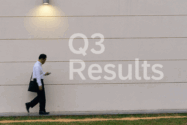SAP SRM
Filter By
Browse By
- SAP Analytics and AI
- SAP Application Development and Integration
- All SAP Application Development and Integration
- SAP ABAP
- SAP ABAP Development Tools
- SAP ABAP Test Cockpit
- SAP API Management
- SAP BAPI
- SAP Basis
- SAP BRF
- SAP Business Application Studio
- SAP CMS
- SAP Design Studio
- SAP Development Tools
- SAP DevOps
- SAP EAI
- SAP EDI
- SAP Extension Suite
- SAP Fiori
- SAP Fiori Elements
- SAP Integration Suite
- SAP Low Code Application Development
- SAP Low Code Automation
- SAP Netweaver
- SAP Release Management
- SAP UI5
- SAP Web Application Server
- SAP Web IDE
- SAP Business Process Management
- SAP Center of Excellence
- SAP CIO
- SAP Customer Experience
- SAP Data and Data Management
- All SAP Data and Data Management
- SAP BW
- SAP BW/4HANA
- SAP Crystal Reporting
- SAP Data Archiving
- SAP Data Center
- SAP Data Governance
- SAP Data Integration
- SAP Data Migration
- SAP Data Quality
- SAP Data Services
- SAP Data Strategy
- SAP Data Visualization
- SAP Data Warehouse Cloud
- SAP DMS
- SAP Document Control
- SAP EIM
- SAP ETL
- SAP ETL Tools
- SAP HANA
- SAP HANA Administration
- SAP HANA Deployment Infrastructure
- SAP HANA Studio
- SAP Master Data
- SAP Master Data Governance
- SAP MDM
- SAP Enterprise Architect
- SAP Enterprise Asset Management
- SAP ERP
- SAP Finance
- All SAP Finance
- SAP Accounting
- SAP AR AP
- SAP Asset Accounting
- SAP Billing Systems
- SAP BPC
- SAP BRIM
- SAP Cash Management
- SAP Central Finance
- SAP Controlling
- SAP COPA
- SAP Cost Center Accounting
- SAP e-invoicing
- SAP FICO
- SAP Finance Automation
- SAP Financial Closing Cockpit
- SAP Financial Consolidation
- SAP Financial Planning
- SAP FX Risk
- SAP General Ledger
- SAP Global Tax Management
- SAP Hyperion
- SAP Order to Cash
- SAP Payment Processing
- SAP Profitability Analysis
- SAP Rebate Management
- SAP S/4HANA Finance
- SAP Universal Journal
- SAP Governance Risk and Compliance
- SAP Human Capital Management
- SAP Intelligent Technologies
- SAP Platform and Technology
- All SAP Platform and Technology
- SAP Business Technology Platform
- SAP Cloud Connector
- SAP Cloud Integration Platform
- SAP Cloud Migration
- SAP Cloud Platform
- SAP Cloud Providers
- SAP Cloud Strategy
- SAP Container Platform
- SAP Digital Asset Management
- SAP Digital Integration Hub
- SAP Digital Signature
- SAP HANA Enterprise Cloud
- SAP HEC
- SAP Hyperscalers
- SAP Infrastructure
- SAP Messaging
- SAP Smart Forms
- SAP Quality and Testing
- SAP Security
- SAP Spend Management
- SAP Supply Chain Management
- All SAP Supply Chain Management
- SAP APO
- SAP Asset Management
- SAP Business Network
- SAP Digital Manufacturing Cloud
- SAP Digital Twin
- SAP EWM
- SAP IBP
- SAP Inventory Management
- SAP Label Printing
- SAP Logistics
- SAP Manufacturing
- SAP Manufacturing Automation
- SAP MES
- SAP MII
- SAP MM
- SAP MRO
- SAP MRP
- SAP Order Management
- SAP Plant Maintenance
- SAP PLM
- SAP Production Planning
- SAP S&OP
- SAP SD
- SAP SPM
- SAP Supply Chain Planning
- SAP Track and Trace
- SAP Transportation Management
- SAP System Administration
SAP Spend Management: SRM
When an organization has many suppliers, it is critical to manage them efficiently and build long-term relationships. Establishing long-term relationships allows for more ideas and feedback to flow freely, streamlined operations, cost reductions, and improved customer service.
SRM Defined
SRM stands for Supplier Relationship Management, which falls under supply chain management. The main purpose is to establish two-way relationships between organizations and suppliers via a web-based platform. It covers innovative methods to coordinate business processes with suppliers, so they are more productive. SRM is integrated with the vendor’s systems for greater efficiencies with interactions. With SAP Supplier Relationship Management (SAP SRM), organizations can examine purchasing history, shorten procurement cycles, and collaborate with partners all in real time.
SAP Spend Management: SRM
When an organization has many suppliers, it is critical to manage them efficiently and build long-term relationships. Establishing long-term relationships allows for more ideas and feedback to flow freely, streamlined operations, cost reductions, and improved customer service.
SRM Defined
SRM stands for Supplier Relationship Management, which falls under supply chain management. The main purpose is to establish two-way relationships between organizations and suppliers via a web-based platform. It covers innovative methods to coordinate business processes with suppliers, so they are more productive. SRM is integrated with the vendor’s systems for greater efficiencies with interactions. With SAP Supplier Relationship Management (SAP SRM), organizations can examine purchasing history, shorten procurement cycles, and collaborate with partners all in real time.
Key Capabilities are:
- Operational Procurement: Catalog management, invoice creation, processing purchase orders, and shopping cart management.
- Strategy Sourcing: RFx and bids management and centralized sourcing.
- Operational Contract Management: Centrally managing supplier contracts.
- Supplier Self-Service: Self-service capabilities for suppliers.
- Services Procurement: Managing services for procurement.
- Operational Reporting: With workforce mobility option.
The significance of SRM is that it automates and streamlines the processes for materials that are ordered frequently, optimizing procurement. It allows organizations to maintain long-term relationships with the right suppliers who have proven historically to be reliable partners. SRM supports supplier information management, compliance, risk management, and performance management.
Benefits of SRM
- Coordinates business operations
- Automates workflows
- Standardizes goods and services acquisitions
It is important to note the difference between SRM and procurement. SRM focuses on contracts and relationships, while procurement focuses on purchases, like ordering, invoicing, or paying. SAP has a cloud-based B2B sourcing and procurement application called Ariba where buyers and suppliers can do business in a networked structure. It provides capabilities such as supplier management, strategic sourcing, supply chain, procurement, services procurement and external workforce, and selling and fulfillment.
Vendor partners offering SRM include apexanalytix, SAP, smartShift.
Key Considerations for SAPinsiders are:
- Increase Supplier Compliance with Sustainable Business Networks. Discover why accurate records of supplier compliance in procurement and ongoing supplier management activities is an important activity.
- Simplify Supplier Qualification with SAP Supplier Lifecyle Management. Learn the functionality of how to simplify and foster supplier relationships, by reading this article.
- Understanding the Key Aspect of Supply Chain Visibility. Kumar Singh, SAPinsider describes what supply chain visibility is, how organizations struggle, and explains one method to kickstart your approach.
624 results
-

Unlocking SAP’s Full Potential with A Full Lifecycle Data Platform
Published: 02/May/2025
Reading time: 3 mins
SAP Advanced Data Migration and Management (ADMM) by Syniti provides a cloud-native solution to help organisations effectively manage data quality and migration, ensuring smoother transformations to SAP S/4HANA while maximising data value and supporting long-term operational agility.
-

Boomi-AWS Collaboration to Speed Up SAP Cloud Migration
Published: 16/May/2025
Reading time: 3 mins
Boomi and AWS have initiated a multi-year agreement to streamline SAP workloads’ migration to AWS, enhance native SAP integration, and enable organisations to leverage generative AI advancements, addressing key integration challenges and supporting cloud adoption.
-

Simplify and Improve Document Output: Convert SAPscript to Smart Forms
Published: 01/July/2005
Reading time: 10 mins
Smart Forms is a tool first delivered with R/3 Release 4.6 for printing and sending documents via email, Web, and fax. The supporting technology allows you to configure and deploy Smart Forms as a workflow-based or event-driven functionality. Find out more about Smart Forms and see how to implement it or convert existing SAPscripts to...…
-
-

The Config Team Combines Software and Services Offerings to Modernise SAP Supply Chains
Published: 23/November/2024
Reading time: 4 mins
The Config Team, an SAP partner specializing in supply chain solutions, combines innovative software with credible consulting to address complex challenges, offering products like PreBilt™, CodingControl™, and IDoc Management Console™ to enhance efficiency and user experience in SAP environments.
-

Is APJ the Jewel in the SAP Crown?
Published: 24/October/2025
Reading time: 4 mins
SAP’s Q3 2025 results confirmed what has been an ongoing trend for many quarters: Asia Pacific & Japan (APJ) is now SAP’s fastest-growing market, posting double-digit cloud revenue growth powered by RISE with SAP and Business Technology Platform (BTP) adoption. That momentum sets the scene for Mastering SAP Collaborate, an SAP TechEd on Tour event,…
-

What to Consider When Building Your SAP E-Commerce Implementation Team
Published: 15/December/2006
Reading time: 12 mins
Examine the technical aspects of planning and executing an SAP E-Commerce project, including the skills required and the typical tasks involved with such a project. Key Concept The multiple channels required to satisfy customer preferences make mySAP CRM applications more complex to deploy from a technical standpoint. Understanding the different technologies to support each channel...…
-

Making Custom Themes Future Ready Using SAP UI Theme Designer
Published: 01/December/2017
Reading time: 16 mins
Obtain clarity on the steps to follow for applying a custom theme to any SAPUI5/HTML5-based applications both in the cloud and on premise. Learn some best practices for creating custom themes that are future ready and the multiple deployment options of the UI theme designer. Key Concept The UI theme designer is a browser-based tool...…
-
-

Creating and Modifying a SAPUI5 Custom Control
Published: 18/January/2021
Reading time: 8 mins
By Cord Jastram, Software Developer at DXC. SAPUI5 offers a large set of controls ranging from simple ones like the Label to complex controls like the PlanningCalendar control. The available set of SAPUI5 controls covers most use cases for SAPUI5, but sometimes the requirements for a developer go beyond the scope of the existing controls.…
-

Lee Marshall to Head SAP’s AI Initiatives in ANZ
Published: 15/October/2025
Reading time: 2 mins
SAP has appointed Lee Marshall as Head of AI for Australia and New Zealand, emphasising its strategy to help customers implement Business AI effectively, leveraging his extensive experience to transition from AI experimentation to measurable production outcomes, amidst a competitive landscape focused on productivity and responsible AI adoption.
-

9 Tips for Planning Your mySAP CRM Implementation
Published: 15/June/2006
Reading time: 9 mins
SAPexpert/CRMImplementing mySAP CRM for the first time, adding functionality to an existing implementation, or upgrading mySAP CRM can seem daunting. It is best to start with an organized plan to give your project direction and purpose. Here are nine tips to help you streamline and optimize the planning process. Key Concept Planning your mySAP CRM...…
Become a Member
Unlimited access to thousands of resources for SAP-specific expertise that can only be found here.
Upcoming Events
-

Mastering SAP Collaborate an SAP TechEd on Tour event
November 12 - 14, 2025
Sydney, New South Wales
Australia
View Event
Related Vendors
Your request has been successfully sent

